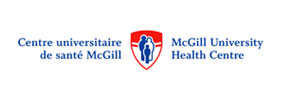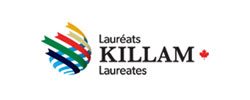Making AI a partner in neuroscientific discovery

New paper argues that Large Language Models can reveal breakthroughs humans alone cannot
The past year has seen major advances in Large Language Models (LLMs) such as ChatGPT. The ability of these models to interpret and produce human text sources (and other sequence data) has implications for people in many areas of human activity. A perspective paper published today in the journal Neuron argues that like many professionals, neuroscientists can either benefit from partnering with these powerful tools or risk being left behind.
In their previous studies, the authors showed that important preconditions are met to develop LLMs that can interpret and analyze neuroscientific data like ChatGPT interprets language. These AI models can be built for many different types of data, including neuroimaging, genetics, single-cell genomics, and even hand-written clinical reports.
In the traditional model of research, a scientist studies previous data on a topic, develops new hypotheses and tests them using experiments. Because of the massive amounts of data available, scientists often focus on a narrow field of research, such as neuroimaging or genetics. LLMs, however, can absorb more neuroscientific research than a single human ever could. In their Neuron paper, the authors argue that one day LLMs specialized in diverse areas of neuroscience could be used to communicate with one another to bridge siloed areas of neuroscience research, uncovering truths that would be impossible to find by humans alone. In the case of drug development, for example, an LLM specialized in genetics could be used along with a neuroimaging LLM to discover promising candidate molecules to stop neurodegeneration. The neuroscientist would direct these LLMs and verify their outputs.
Lead author Danilo Bzdok mentions the possibility that the scientist will, in certain cases, not always be able to fully understand the mechanism behind the biological processes discovered by these LLMs.
“We have to be open to the fact that certain things about the brain may be unknowable, or at least take a long time to understand,” he says. “Yet we might still generate insights from state-of-the-art LLMs and make clinical progress, even if we don’t fully grasp the way they reach conclusions.”
To realize the full potential of LLMs in neuroscience, Bzdok says scientists would need more infrastructure for data processing and storage than is available today at many research organizations. More importantly, it would take a cultural shift to a much more data-driven scientific approach, where studies that rely heavily on artificial intelligence and LLMs are published by leading journals and funded by public agencies. While the traditional model of strongly hypothesis-driven research remains key and is not going away, Bzdok says capitalizing on emerging LLM technologies might be important to spur the next generation of neurological treatments in cases where the old model has been less fruitful.
“To quote John Naisbitt, neuroscientists today are ‘drowning in information but starving for knowledge,’” he says. “Our ability to generate biomolecular data is eclipsing our ability to glean understanding from these systems. LLMs offer an answer to this problem. They may be able to extract, synergize and synthesize knowledge from and across neuroscience domains, a task that may or may not exceed human comprehension.”
The Neuro
The Neuro – The Montreal Neurological Institute-Hospital – is a bilingual, world-leading destination for brain research and advanced patient care. Since its founding in 1934 by renowned neurosurgeon Dr. Wilder Penfield, it has grown to be the largest specialized neuroscience research and clinical center in Canada, and one of the largest in the world. The seamless integration of research, patient care, and training of the world’s top minds make The Neuro uniquely positioned to have a significant impact on the understanding and treatment of nervous system disorders. It was the first academic institute in the world to fully adopt Open Science, to help accelerate the generation of knowledge and discovery of novel effective treatments for brain disorders. The Neuro is a McGill University research and teaching institute and part of the Neuroscience Mission of the McGill University Health Centre. For more information, please visit www.theneuro.ca





